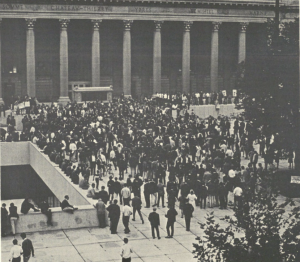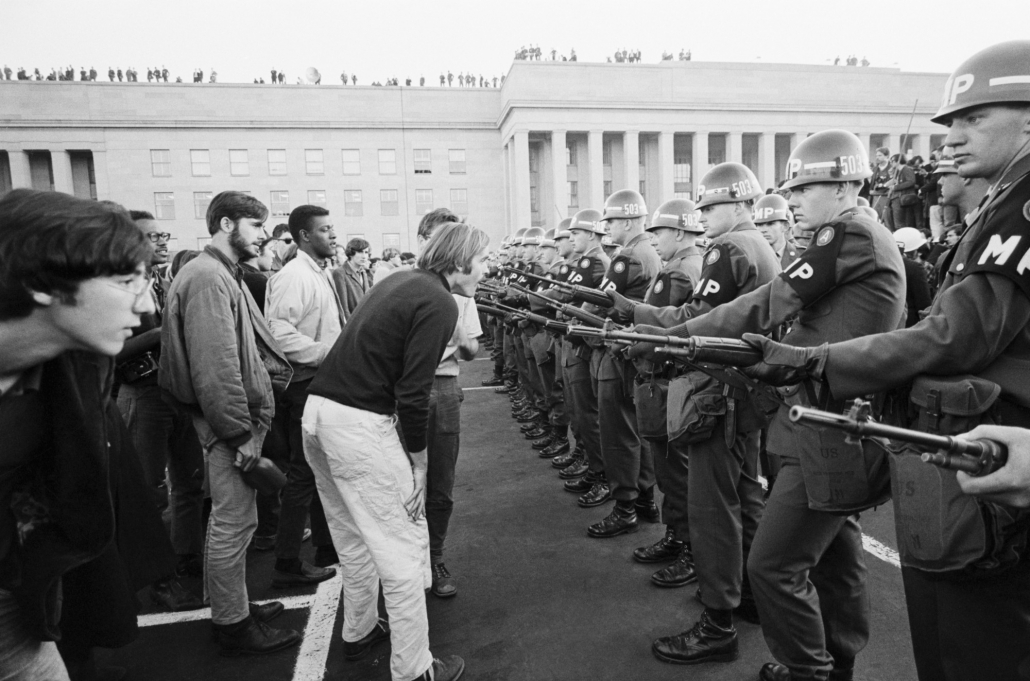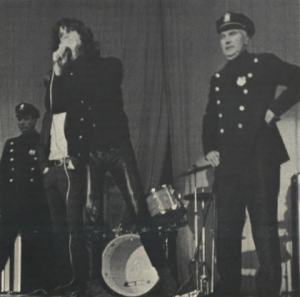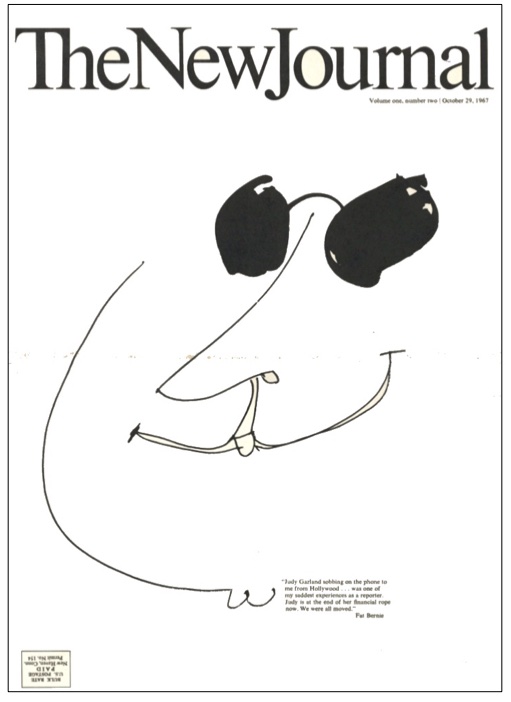Remember The New Journal? Here’s Its First Year!
The New Journal began in 1967, the brainchild of Yale Daily News expatriates Pete Yeager and Dan Yergin, both ’68. It was student-run and free — one of the first serious, college publications that didn’t require a subscription.
A few of us ’69ers joined that first year: Paul Malamud, Howard Newman, Jean-Pierre Jordan. (Any others? if so, leave a comment.)
The next year more people got involved: According to the Yale Banner a total of 12 of our classmates were involved: John Adams, Milton Anderson, Paul Bennett, Peter Choy, Jeffrey Denner, Konstantine Georgiades, David Mylenbusch, Jeffrey Pollock, Andrew Popper, Robert Randolph, Andrew Wechsler, and Jeff Wheelwright. (Is that right? Complete? If not, please comment below.)
Do you remember when you first saw The New Journal? Did you read it? What did you think? If you remember, add to the comments below. If you don’t, feast your eyes on the six issues archived below from that first year. And enjoy!
The “New” in The New Journal
Committed to what’s now called long-form journalism, The New Journal delivered well-written investigative pieces, in-depth film or book reviews, commentary, photography and features about life in New Haven and/or Yale. A contemporaneous report in the Harvard Crimson said: “The writing is consistently good and often superb; everything from book reviewing to reporting on the Pentagon demonstration is approached from a fresh angle.”
With the exception of a short publishing hiatus in 1972 owing to an embarrassing lack of funds (Yale Daily News report), The New Journal continues to publish to this day. See the current issue here. You’ll notice that the focus is still in-depth, well-written articles about New Haven and/or Yale; the biggest change is the addition of much better color graphics, hyperlinks, and interactivity.
There was speculation that the name of the publication was derived from the “new journalism” of Tom Wolfe, Norman Mailer and Hunter Thompson. But the founding mission statement in 1968 explains the “New” as derived from a different idea:
“This university has once again reached that stage in history when people are talking about the New Yale, presumably to be distinguished from the Old Yale, which in its own day was presumably considered new. Wishing to share in this modernity, we have chosen The New Journal as the name for our publication. Besides, things seemed slow around here.” (source)
Six Of The First Seven Issues
Owing to the packrat proclivities of our own JP Jordan (Reunion Co-Chair and first “Circulation Manager” for The New Journal), we had the paper copies of six of the first seven editions, which I have dutifully scanned to PDF files. Here they are:
Volume One, Number One, October 15, 1967
Volume One, Number Two, October 29, 1967

The second issue has commentary by Bart Giamatti and a major story on p. 8 about Lady Bird Johnson’s speech to the Political Union in Commons, by Dan Yergin and Mopsey Strange Kennedy. (She sounds familiar; does anyone know why/how she was part of the scene then?)
Volume One, Number Three, November 12, 1967

Volume One, Number Four, November 26, 1967
Volume One, Number Six, January 21, 1968
Volume One, Number Seven, February 4, 1968

The New Journal: Mother Of Illustrious Alumni
A quick check of the Wikipedia article about The New Journal shows that a lot of people became great writers after cutting their teeth at The New Journal. Here is Wikipedia list of notable alumni involved in The New Journal:
- Emily Bazelon, staff writer for The New York Times Magazine, former senior editor for Slate, and senior research fellow at Yale Law School
- Richard Bradley, editor of Worth magazine
- Jay Carney, White House press secretary under Barack Obama
- Richard Conniff, writer of books, articles, and television screenplays about nature; winner of the 1997 National Magazine Award and a 2007 Guggenheim Fellowship
- Elisha Cooper, American writer and children’s book author
- Andy Court, producer, 60 Minutes
- Dana Goodyear, staff writer at The New Yorker and co-founder of Figment
- Paul Goldberger, Pulitzer Prize-winning architectural critic and Contributing Editor for Vanity Fair
- Darren Gersh, Washington, D.C. bureau chief for Nightly Business Report
- Charlotte Howard, healthcare correspondent, The Economist
- Tom Isler, documentary filmmaker
- Anya Kamenetz, writer, Fast Company; author, DIY U and Generation Debt
- Elizabeth Kolbert, American journalist and author, best known for her Pulitzer Prize-winning book The Sixth Extinction: An Unnatural History. She is currently a staff writer for the New Yorker magazine.
- Hampton Sides, journalist and historian; editor-at-large of Outside magazine; author, Hellhound on His Trail, Ghost Soldiers, Blood and Thunder
- John Swansburg, deputy editor for Slate
- Jessica Winter, executive editor at The New Yorker







My work for the Journal was so minor I can’t remember what it was—gopher maybe? The Journal was slick and it felt important and more grown-up than the Daily News. I dimly thought, I think there’s a career here for me.
Harry,
What a magnificent, and difficult, job getting these issues of TNJ transferred to the class website for all of us to read, and reminisce. Thank you for your heroic efforts. Alas, Number Five is missing, but maybe some one of us early participants still has a copy stashed away somewhere.
Peter Yaeger who lived across the hall from me in Berkeley, recruited me to the first meetings with Dan Yergin and Jerry Bruck who had created the Friday section of the Yale Daily News. Peter was business manager and I was assistant Business manager. I recruited Jean-Pierre Jordan, my roommate for two years at Yale. I was assigned to work with Ron Gross, who was at the A&A school, who created the New Journal design. Every issue we did paste-ups all night at their desks which was a rowdy evening. I eventually did some writing and editing. I did the review of the Living Theater production which caused a row because I criticized Robert Brustein.
Our senior year I became co-editor with Jonathan Lear who was a junior.
I remember when a freshman came in and asked if he could write for the NJ. We asked him about his experience. He said he had a major piece of reportage on New Jersey politics published in the Sunday Times Magazine his Senior Year in high school. It was Paul Goldberger before his Pulitzer and all his other accomplishments. He became a friend and attended my wedding. The creative talent we were able to engage both our first year and our Senior year was humbling. But the most fun I had was the nights at the Art and Architecture school both years.
Just one more comment. The two women who were in New Haven in 1968-69 for the New Journal were Mopsy Strange Kennedy who was a phenomenal writer who split time between Boston and New Haven that Dan charmed to contribute. The other was the elegant Susan Braudy, the wife of Leo Braudy, who became a frequent contributor and sometime therapist to Dan Yergin.
Jeff:
I think we did an interview of Jack Morrison
I recall being asked to assist in distribution of the fledgling New Journal, since my writing for the legal profession came years later. Amusing stories involving a character PigShit Patterson, I don’t even remember the context, but it brought a smile to my face like the YDN could not ever accomplish. Jeff Pollock and JP Jordan instilled me with pride in their baby, their New Journal.
Awww, shucks, Tony. Thank you for the kind words. Those first two years of TNJ were the happy result of the successful collaboration of a heck of a lot of talented people. I was just along for the ride, and lucky to be involved. Although, now that I think of it, there was also some robbing from Peter to pay Paul, but that’s my secret, and another story.
Mopsey Strange Kennedy was then (might still be?) the wife of Duncan Kennedy, back then a brilliant Yale Law School student and only slightly later the youngest faculty member ever at Harvard Law School. Duncan was my mentor and senior paper advisor there, and soon became notorious in legal education circles as the co-founder of the Critical Legal Studies movement during the ‘70’s. Duncan’s writing, in contrast to Mopsey’s (which was always terrific) has always been completely impenetrable (at least to me).
Not to be overlooked, in discussing those first couple of years, is the contribution of Kosta Georgiades to the financial health of TNJ. As I recall, he sold $ 25,000 or so of much-needed paying advertising to businesses around town. Thank you, Kosta, for your invaluable efforts. Without it, and other unnamed sources, it is not clear that he New Journal would have survived that second year.